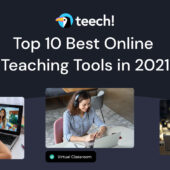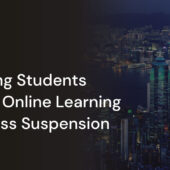Social distancing and lockdowns have disrupted university study for the past 18 months. Students are understandably stressed as shown by a dramatic drop in student satisfaction across Australia reported in the annual Student Experience Survey. Federal Education Minister Alan Tudge has drawn attention to this in calling for a “return” to on-campus study.
But the world is increasingly digital. Old notions of lecture halls will not help graduates to thrive in their careers. We need university study and effective online learning that support students to succeed by preparing them for a digital future. Many studies have reported that work will become more blended, with less time spent in the office as working from home increases. The COVID-19 pandemic dramatically accelerated this trend.
Diverse industries have found they can move online effectively, making it an authentic workplace. Telehealth has become the default option for consulting your GP, while the first place to find a service or product is an online search engine. Professionals need to translate their skills into any environment – physical or virtual – and have confidence to use new spaces and formats.
“Effective online learning teaches us in ways that reflect the realities of how professionals and the wider community now operate.”
What about the impacts on learning?
Learning is created through interactions – with teachers, peers, and information. Decades of research show learners learn best when learning is active, engaging, relevant, and intentionally designed. Those principles are true wherever the learning happens: on-campus, online, or in the workplace.
The real question is how to balance the best of online with the best of on-campus and workplace delivery. Universities are already pursuing this path. University study has been blended for more than two decades as study resources, activities and assessments were moved to subject and course websites in virtual learning environments.
Build on the best of recent experiments in effective online learning
The emergency remote teaching response has pushed teaching teams to consider alternative ways to learn. They have trialled and refined new online activities. Many teachers report they will keep at least some of these.
Professor Eric Mazur at Harvard is famous for his use of peer instruction to make classes active and social. He reports his online model developed during 2020 has improved learning and support so convincingly that he intends to continue with that format. Breaking assumptions about what works best has opened the door to a better understanding of online teaching.
Students in all education sectors have struggled with emergency remote teaching and its backdrop of disrupted life. They have reported difficulties with online provision, lack of motivation, loneliness and decreased mental well-being.
But universities are refining their courses. When students experience well-designed online learning over time, they build familiarity and confidence. We asked campus-enrolled students at Deakin about their experience of study during the pandemic with regular “pulse-check” surveys. Their feedback shows their confidence in online study and assessment has increased strongly over the past 18 months as they built skills and familiarity.
As we move to more sustainable models for today’s learners, universities are rethinking learning activities. Sitting and listening to the sage on the stage is being replaced by active learning using real-world information and scenarios.
We need to invest in intentional learning design that combines the best of online and on-campus delivery. This will show students they can learn, thrive and build the skills they need however they study.
Reference: https://www.studyinternational.com/news/effective-online-learning/



